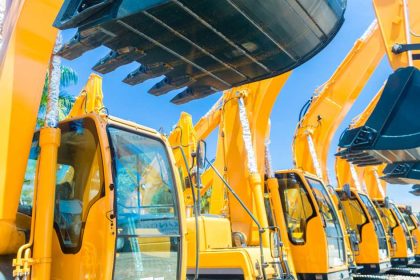A $4 billion plan to build up to 2700 homes for indigenous Australians in the Northern Territory over the next decade has been unveiled by the Federal and Northern Territory governments.
The landmark agreement will see up to 270 homes built annually in a bid to slash the territory’s household overcrowding problem in half.
Once built, the properties are set to provide a place for more than 10,000 Indigenous Aussies to call home.
The 10-year-funding plan will also include ongoing maintenance and repair support as well as an additional $120 million over three years for remote housing and community infrastructure upgrades.
Prime Minister Anthony Albanese announced the funding yesterday at the remote community Binjari, near Katherine, and says the new targets would help close the gap between indigenous and non-indigenous Australians.
“The Northern Territory has the highest level of overcrowding in the country, which we are working to halve by building 270 houses each year,” he said.
“Today’s announcement will improve housing conditions in remote communities and help close the gap between Indigenous and non-Indigenous Australians.”
“This landmark agreement between the Commonwealth, Northern Territory Government and Aboriginal Housing NT delivers a significant investment in remote housing in the NT over the next decade.”
New homes to help end NT overcrowding
Minister for Indigenous Australians Linda Burney says the new homes will help the territory slowly overcome home overcrowding, one of the biggest barriers facing Indigenous Australians.
“Increasing housing supply will ease overcrowding, which we know is a major barrier to closing the gap,” she said.
“This historic investment will make a difference to the lives of so many Aboriginal people living in remote communities.”
The agreement will see the federal and territory governments partner with Aboriginal Housing NT and Aboriginal Land Council to build the homes with culture and climate in mind.
The partnership will ensure community consultations, local decision-making, and community priorities will be a central part of the planning and construction of the homes.
Indigenous housing collaboration Wilya Janta (Standing Strong) has called for the government to follow this promise by building culturally and environmentally appropriate homes that allow First Nations communities to thrive through culturally sensitive collaboration, design and building.
The group warns that failure to do so could mean the funding is wasted.
They say ignoring indigenous community consultation has previously led to poor home-build designs that have led to disease, illness and the shutting off of power.
“We commend the federal and territory governments, land councils, and housing on this agreement, which will invest urgently needed funding to fix the longstanding remote housing crisis,” Wilya Janta CEO Dr Simon Quilty said.
“The current model of community engagement in housing design is failing. Homes in remote communities are overcrowded and overheated, fuelling the social, health, and cultural inequities faced by Aboriginal communities.
“We’re talking about people being treated for entirely preventable skin diseases caused by overcrowding. Patients who can’t store medicine properly because they can’t afford the high cost of electricity, leading to the power being turned off and fridges overheating.”
“Building houses is one thing; building trust and community is another.”
New homes must consider indigenous culture
Chair of Wilya Janta and Warumungu man Jimmy Frank Jupurrurla says the low quality, quick-fix housing constructed in past indigenous housing projects had not been fit for purpose.
“Governments focus too much on cost efficiency and doing things quickly, but in the long run, these houses are making our people sick, and our well-being is forgotten,” he said.
“The new houses being built today are not designed for our culture or climate.”
“Climate change is what we expect in the next 20 years; these houses need to be prepared for really hot weather.”
The Aboriginal consultancy group is working with the community and industry across the territory to build community-designed homes that will act as a feasibility study for culturally appropriate and climate-resilient housing.
“Aboriginal people have always held the solutions for their communities; they are experts in knowing how to live well in hot climates, but they’ve just never been listened to in regards to how houses might be built that recognise both culture and environment,” Dr Simon Quilty said.
Construction jobs guarantee for the NT
The announcement is also great news for construction workers, with the new builds and ongoing maintenance contracts set to provide a significant job boost to territory tradies.
Northern Territory Chief Minister Eva Lawler says the funding will also provide the state with numerous employment and training opportunities for locals.
“This is a game changer for the Territory, as this investment goes straight into the hands of our remote communities and Territory businesses,” she said.







